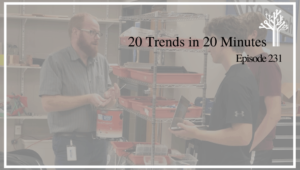6 reasons foundations should incorporate venture strategies
Foundations should invest at least a portion of their endowments in return seeking vehicles related to their programmatic goals (often called Mission Related Investments, MRI). They should also leverage their balance sheets to provide venture debt and credit enhancements (often structured as Program Related Investments, PRI) to help scale promising organizations—both nonprofit and for-profit. Here’s a half a dozen reason why foundations should more aggressively use venture investment strategies:
- The US won’t achieve goals without innovation. Current reform agendas will bring up the rear but are unlikely to dramatically boost learning productivity—that will require innovation.
- Innovation is best produced and scaled by the private sector that has inherent incentives for speed, quality and scale. We won’t be able to spend our way to national educational improvement; public-private innovation partnerships will be key to improvement as they are in health, energy, defense, and transportation.
- There is a new opportunity set for innovation; cheap access devices, ubiquitous broadband, and powerful application development platforms are making possible a new generation of learning tools. Innovation platforms have transformed every other sector and will transform education if we create openings for investment and innovation
- There is a unique opportunity to leverage the $10 billion of ARRA investment particularly in regards to school improvement. Nonprofits simply can’t invest and scale sufficiently to support work in 10,000 struggling schools.
- Nonprofits need scaling capital. In addition to unrestricted grants, high performing charter school operators and other nonprofits need access to low cost growth capital including low cost loans or credit enhancements.
- Best of all, foundations can improve impact with little additional risk by selectively making venture debt and equity investments related to program goals.
Josh Cohen, City Light Capital, and I are writing a paper on this subject. If you know of a good example of an MRI or PRI, we’d like to talk to you.






John Danner
This is a subject close to my heart having been in both worlds. The big problem on the non-profit side is that we need a scorecard. VC's make big bets all the time because there is a clear payoff. If we came up with a metric for quantifying social profit in the charter sector, i think a lot of people would start to organize around maximizing social profit returns. My definition of profit in this world would be the change in number of kids proficient at your schools from one year to the next. I like the idea of quantifying this based on the delta in lifetime earnings between college grads and non-college grads ($1 million or so if I remember correctly). So if you take every grade of K-12 and divide lifetime earnings delta by 13, you get a value of about $75,000 per student you move to proficient. Real economists will probably cut the value of the earnings down to their net present value, but i'll leave that to the economists. the bottom line is that moving kids to proficient is worth a lot of money and if the non-profit world thought that way, there would be a ton more investment in the folks that are able to do that.
Replies
Tom Vander Ark
Great point. Two years from now, after Common Core, RttT, i3, and assessment grants play out, we should be in a be in a better position to use common dashboards with historical and projected value-add.
Thomas Carroll
WFF provided a PRI to Brighter Choice Foundation. Allows us to capitalize a revolving loan fund to build quickly charter school facilities. We, in turn, repay the revolving loan fund each time we close on intermediate financing, using New Market Tax Credits. In turn, tax-exempt bonds allow takeout of interim financing. Banks don't want to touch charter facilities during the construction phase because too much of a four-letter word: R-I-S-K. The perception of risk is overblown because they don't understand the market. Philanthropists who give in the charter market and demand data in return have a very good sense of how to judge risk and thus minimize any chance that they will lose their investment.
Replies
Tom Vander Ark
Thanks Tom. Good point and great example.